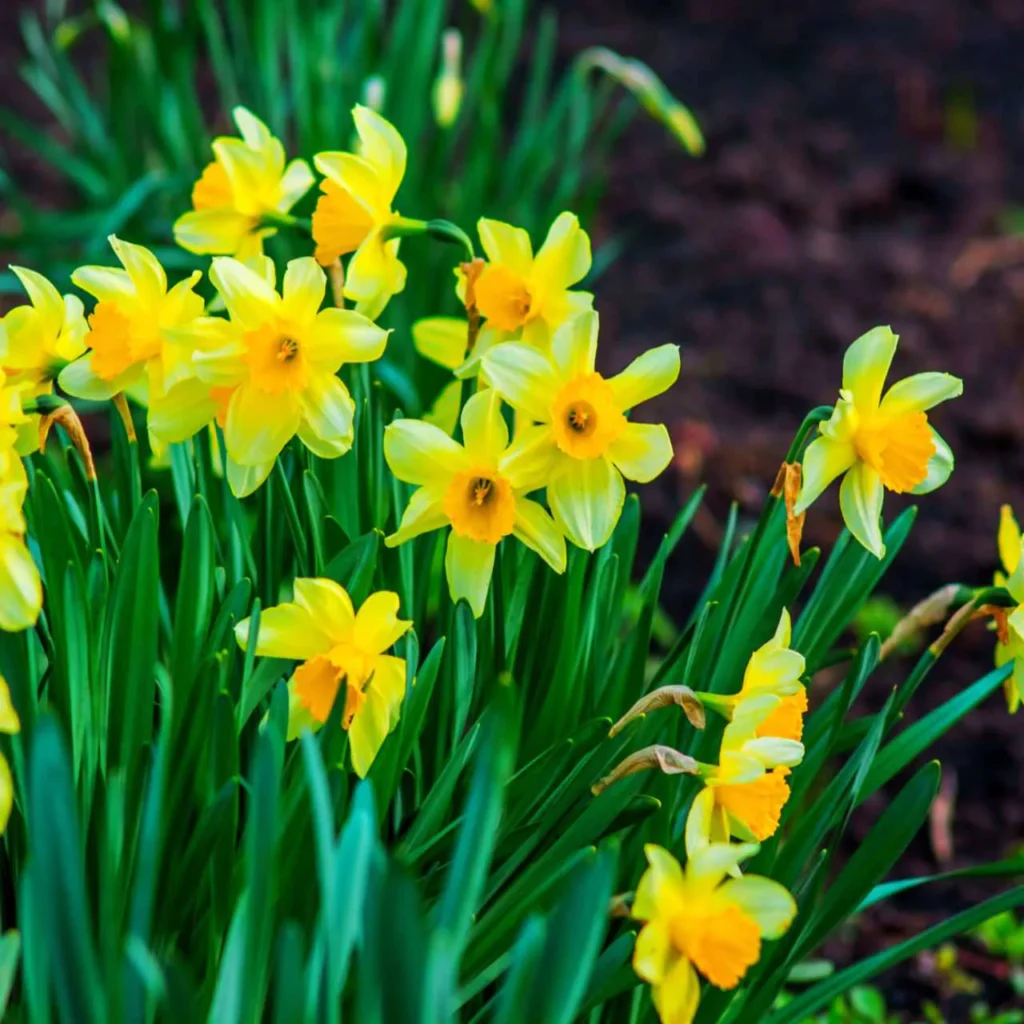Daffodils — with their bright yellow, white, and orange trumpet-shaped blooms — are a symbol of spring, renewal, and hope. These cheerful flowers aren’t just popular in home gardens and public parks; they also play a significant role in floriculture, essential oil extraction, and even pharmaceutical research. While daffodils grow in temperate regions worldwide, one country stands tall as the global leader in their production.
So, which country is the largest daffodil producer in the world? In this article, we’ll uncover the answer and explore what makes this country ideal for daffodil cultivation, the economic and cultural significance of the flower, and its fascinating applications beyond ornamental use.
A Brief History of Daffodils

Daffodils, botanically known as Narcissus, originate from Southern Europe and North Africa. The ancient Greeks and Romans admired daffodils for their beauty and medicinal uses. The name Narcissus comes from Greek mythology — a youth so enchanted by his own reflection that he turned into a flower.
By the 17th century, daffodils were widely cultivated across Europe and the British Isles, eventually making their way to North America. Today, daffodils are among the most popular spring bulbs worldwide, prized for their vivid colors, early blooming nature, and symbolic association with new beginnings.
Which Country Is the Largest Daffodil Producer in the World?
The title of the largest daffodil producer in the world belongs to the United Kingdom, particularly the regions of England, Wales, and Northern Ireland.
Key Facts:
- The UK accounts for approximately 90% of the world’s commercial daffodil production.
- Over 4,000 hectares (10,000 acres) of land are dedicated to daffodil farming in the UK.
- More than 500 million daffodil stems are harvested annually for domestic markets and international export.
- Wales alone produces a significant share of the UK’s daffodils and has even designated it as its national flower.
No other country comes close to matching the UK’s scale and expertise in daffodil production.
Why the United Kingdom Leads the World in Daffodil Production

Several factors explain why the UK dominates global daffodil cultivation:
Ideal Climate and Soil
Daffodils thrive in cool, temperate climates with well-draining soil — precisely the conditions found across much of the UK, especially in the Southwest of England (Cornwall, Devon), Wales, and Northern Ireland. These regions offer:
- Mild, wet winters
- Cool, humid springs
- Loamy, nutrient-rich soil
The UK’s long growing season allows daffodils to bloom from late February through April.
Longstanding Horticultural Tradition
The British Isles have cultivated daffodils for centuries, with farmers and horticulturists continually breeding new varieties. The country is home to some of the world’s most experienced growers, who combine traditional practices with modern technology for large-scale, high-quality production.
Thriving Cut Flower and Bulb Markets
The UK has a strong domestic market for cut daffodils, especially during Mother’s Day, Easter, and St. David’s Day (March 1st in Wales). Additionally, the country exports bulbs and fresh stems to Europe, North America, and Asia, capitalizing on global demand for spring flowers.
Pharmaceutical and Industrial Use
Interestingly, parts of the UK also grow daffodils for pharmaceutical purposes. Certain varieties, like Narcissus pseudonarcissus, contain galantamine, a compound used to treat Alzheimer’s disease. This has created a niche but valuable market for medicinal daffodil farming, particularly in Wales.
Major Daffodil-Growing Regions in the UK

Cornwall and Devon (England)
- The mild coastal climate and early spring season make Cornwall one of the earliest daffodil-harvesting regions in Europe.
- Some of the largest commercial daffodil farms in the world are based here.
Wales
- The national flower of Wales, daffodils bloom in abundance across the country.
- Wales is also the center for medicinal daffodil farming, especially in Powys and Brecon Beacons.
Northern Ireland
- With fertile lands and a temperate climate, Northern Ireland produces significant daffodil crops for both fresh-cut flowers and bulb exports.
The Global Daffodil Market: Competitors and Contributions
While the UK is the global leader, a few other countries also produce daffodils, though on a much smaller scale:
Netherlands
The Netherlands, known as the world’s largest producer of flower bulbs (including tulips and hyacinths), also grows daffodils, primarily for export.
United States
Daffodil farming occurs in Washington, Oregon, and California, mainly for the domestic fresh flower market and festivals like Daffodil Days.
New Zealand
New Zealand’s Canterbury region produces daffodils for export to Asia and Australia during the Southern Hemisphere’s spring.
France
Regions in Brittany and Normandy cultivate daffodils for both ornamental and floral display purposes.
Despite these contributions, none of these nations match the UK’s scale or market share.
Daffodils in Culture and Medicine

Symbolism and Festivals
Daffodils symbolize hope, rebirth, and resilience. In the UK:
- St. David’s Day (March 1st) in Wales celebrates the daffodil as a national symbol.
- The Great British Daffodil Appeal, run by the charity Marie Curie, uses daffodils as emblems of cancer awareness and fundraising.
Many towns and gardens host daffodil festivals celebrating the arrival of spring.
Medicinal Uses
Certain daffodil species contain galantamine, a naturally occurring alkaloid used to manage the symptoms of Alzheimer’s disease. Commercial daffodil farming for pharmaceutical extraction is centered in Mid Wales, offering both economic and medical value.
Daffodil Production by the Numbers
| Country | Approximate Annual Production (Stems) | Notes |
|---|---|---|
| United Kingdom | 500+ million | Largest global producer |
| Netherlands | 60–80 million | Focused on bulbs and exports |
| United States | 20–30 million | Primarily for domestic cut flower market |
| New Zealand | 10–15 million | Exports to Asia and Australia |
Challenges Facing the Daffodil Industry

Climate Change
Unpredictable weather, excessive rainfall, and warming winters threaten the delicate timing of daffodil blooms, potentially affecting yield and quality.
Labour Shortages
Harvesting daffodils is labor-intensive, requiring skilled workers during a narrow harvesting window. Seasonal labor shortages can pose difficulties for growers.
Market Pressures
Imported flowers from cheaper overseas producers, although limited in the case of daffodils, occasionally impact domestic market prices.
The Future of Daffodil Farming
- Sustainable Practices: Growers are increasingly adopting eco-friendly farming techniques, reducing pesticide use, and implementing crop rotation.
- Expansion of Medicinal Farming: With Alzheimer’s cases on the rise globally, the demand for galantamine-rich daffodils may increase.
- Agri-Tourism: Many farms are opening their fields to visitors during blooming seasons, combining agriculture with tourism for additional revenue.
Conclusion
So, which country is the largest daffodil producer in the world?
The resounding answer is the United Kingdom.
With its perfect climate, centuries-old horticultural tradition, thriving cut-flower markets, and even medicinal applications, the UK produces over 500 million daffodil stems annually, accounting for 90% of global daffodil production. While countries like the Netherlands, the United States, and New Zealand contribute to the global market, none can rival the UK’s expertise, scale, or cultural connection to this iconic flower.
Whether adorning spring gardens, brightening hospital rooms, or contributing to life-changing medicine, the daffodil remains a powerful symbol of beauty, hope, and innovation — and it continues to bloom most abundantly in British soil.





Leave A Comment